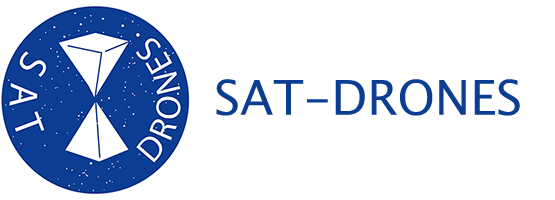This is the first blog on the Sat-Drones by Lucia Lovison-Golob. PhD.
Welcome to everybody and feel free to ask questions and give suggestions.
I want to talk about registration for Unmanned Automated Systems (UAS) proposed by the Federal Aviation Administration (FAA).
Practically, recreational drone users or hobbyist do not have to register the UAS. If you are a pilot and are using small UAS for hobby and fun, for example for educational or recreational flying only, do not worry: you do not have any obligation, just continue to have fun. The aircraft requirements are the following ones: you must operate in compliance with Section 336 of Public Law 112-95 (Special Rule for Model Aircraft); and the aircraft if over 0.55 lbs must be registered. if for hobby, you must make sure that you fly 5 miles from airports without prior notification to airport and air traffic control; and must follow community-based safety guidelines. As operating rules, if you fly for hobby, you always must yield right of the way to manned aircraft. Must keep the aircraft in sight (visual line-of-sight); UAS must be under 55 lbs. Legally, if you are a hobbyist, you must follow the Public Law 112-95, Section 336 – Special Rule for Model Aircraft FAA Interpretation of the Special Rule for Model Aircraft.
As of March 31, 2016, public, commercial and other non-model drone operators may use the new online registration system. If you are a pilot who is flying small UAS commercially, that means flying for commercial use (e.g. providing aerial surveying or photography services) or flying to a business (e.g. doing roof inspections or real estate photography or video photography), you must also be 16 years old, have a Remote Pilot Airman Certificate (RPAC), and must pass Transportation Security Administration (TSA) vetting. These last two requirements also mean a lot of opportunities for new organizations and people: such as new training schools and drone pilot security vetting. If you fly commercially small UAS, where they are within 0.55 lbs and 55 lbs, you must register your UAS. Moreover, you must undergo pre-flight check to ensure UAS is in condition for safe operation.
The location is also important: if you fly for commercial use, you must fly at all time in Class G airspace unless you have a waiver.
As operating rules, If you fly commercially small UAS, you must keep the aircraft in sight (visual line-of-sight); must fly under 400 feet or shortly more than 120 m above ground level; must fly during the day; must fly at or below 100 mph; must yield right of way to manned aircraft; must not fly over people; must not fly from a moving vehicle. In each of these cases, you can obtain a waiver. As reported in the site” The small UAS rule (14 CFR part 107) includes the option to apply for a certificate of waiver, which allows for a small UAS operation to deviate from certain operating rules if the FAA finds that the proposed operation can be performed safely.” Please look here https://www.faa.gov/uas/beyond_the_basics/#waiver
Legally, If you are a commercial remote pilot, you must follow Title 14 of the Code of Federal Regulation (14 CFR) Part 107.
A model aircraft (UAS) within 0.55 lbs (250 grams) and 55 lbs (25 kg) and when not flying under the Special Rule for Model Aircraft will receive a unique Certificate of Aircraft Registration for each aircraft. Operators can still continue to use the existing paper-based registration system.
To start the registration process of your small UAS, please go here: https://registermyuas.faa.gov/
